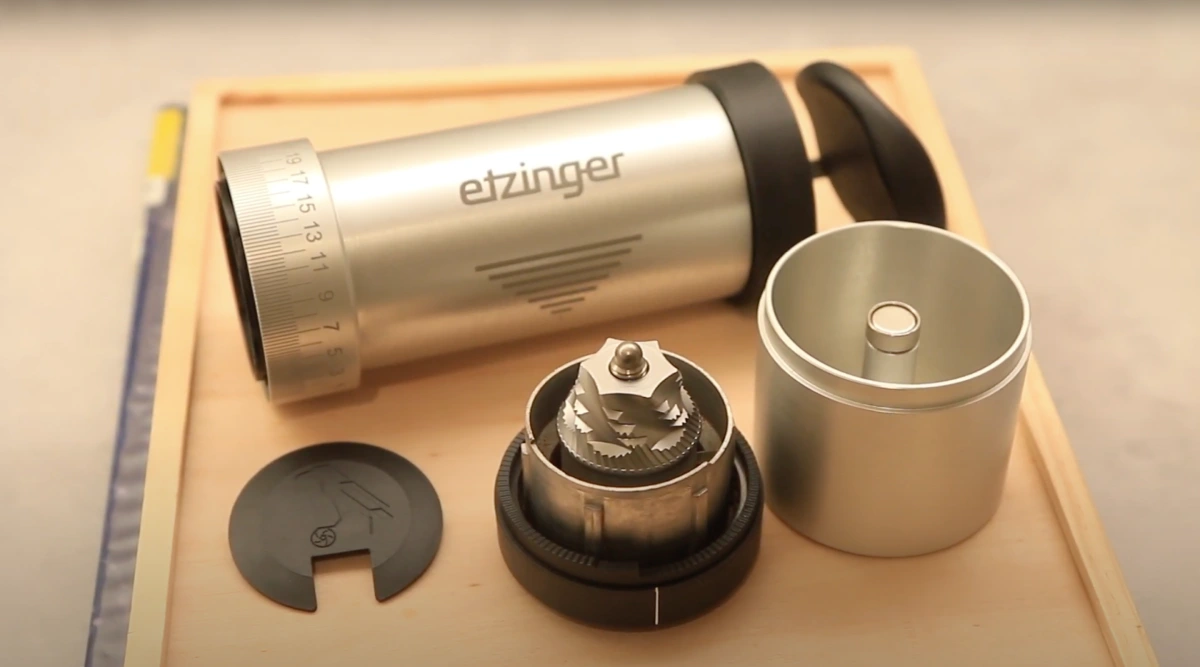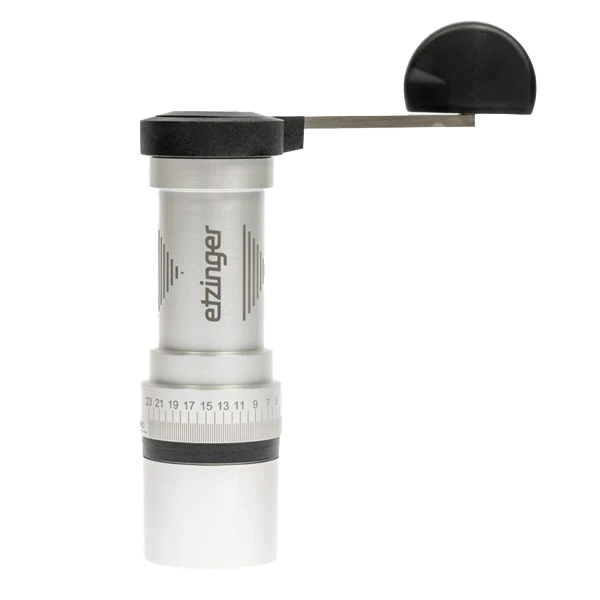Etzinger is a brand with a solid reputation for precision and quality in the coffee grinding world. Their Etz-I hand grinder has been the subject of much acclaim, adding another layer of intrigue to the brand’s already sterling reputation. To determine whether lives up to the high standards set by the industry’s top grinders, I purchased one for this detailed Etzinger Etz-1 review.
Is the Etz-I a game-changer in a market filled with strong competitors, or does it fall short? In this review, I’ll explore this and more.
Summary: Etzinger Etz-I Coffee Grinder
- Premium look and feel
- Rotating ring burr system minimizes burr wobble
- 32mm steel conical burrs for consistent grinding
- Quick and easy disassembly for convenient cleaning
- Speedy grinding performance across all grind sizes
Design and Build Quality
The Etz-I immediately catches your eye with its sleek, modern design. The dimensions are compact, making it easy to fit into any kitchen setup or pack for travel.
The Etz-I comes in two models: the Trim and the Regular. The dimensions vary slightly between the two, with the Trim model measuring 220mm in height and 47mm in width, and the Regular model at 220mm high and 55mm wide. Weighing 690g for the Trim and 750g for the Regular, I found it lightweight yet substantial in my hands.
The grinder comes with a retractable crank handle, a feature I like as it enhances its portability. As for color options, it offers a subdued palette that complements its premium feel.
Speaking of premium, the Etz-I doesn’t just look the part; it feels it too. The materials are top-notch with an anodized aluminum and fiberglass-reinforced plastic construction. The build quality is robust, exuding a sense of durability and long-term stability. The 30-gram capacity is generous enough for multiple brews, making it both a practical and stylish addition to any coffee brewing arsenal.
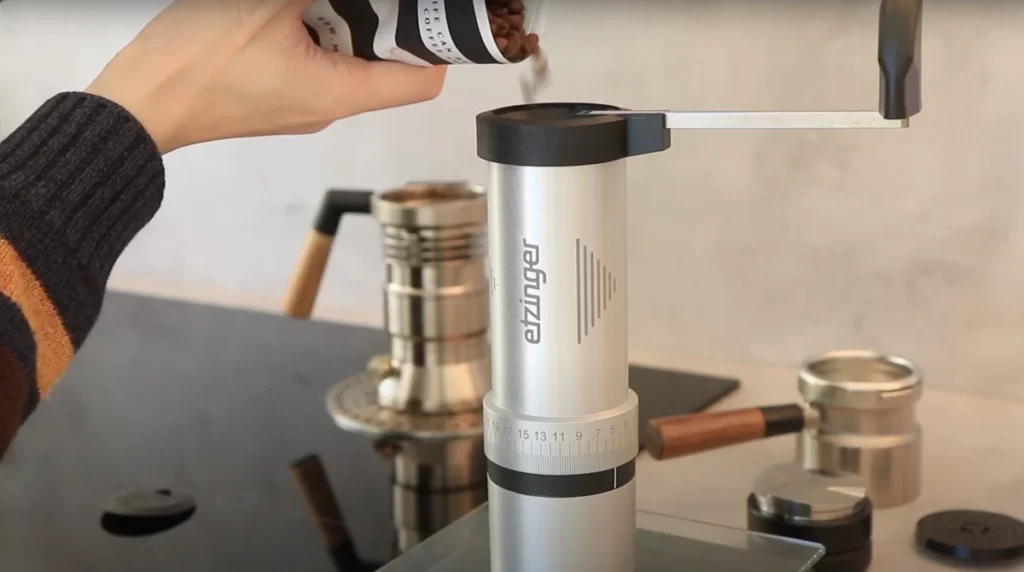
Grind Adjustment and Ease of Use
The Etz-I features an external grind adjustment mechanism, making it incredibly user-friendly. With 88 steps available for grind adjustment, each click represents a 0.02mm burr movement, allowing for granular control over your grind size.
What sets the Etz-I apart is the repeatability of these settings, thanks to a precise Vernier scale indicator. The tactile feedback on each click makes adjustments feel almost haptic, ensuring you’re getting the exact grind size you aim for.
When it comes to speed, I was impressed with the Etz-I. The grinder performs efficiently across a range of grind sizes. While the exact speed can vary depending on the beans and the grind setting, it’s generally quick.
Now, let’s talk about the thing I disliked the most about the Etz-I – the cranking direction. The majority of hand grinders use a clockwise motion when grinding. The Etz-I on the other hand utilizes a counter clockwise movement.
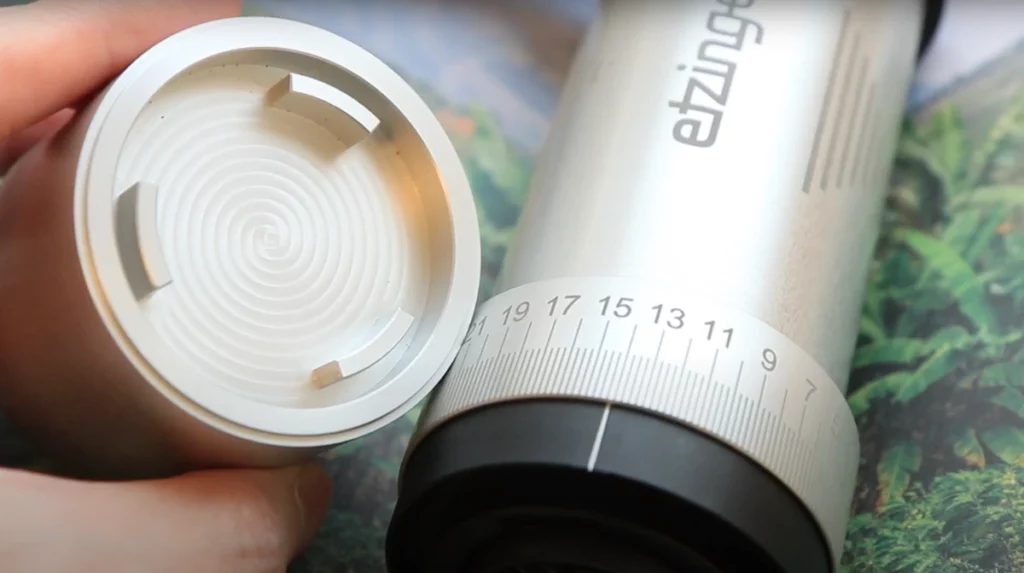
Based on limited biomechanical studies and my own experience, clockwise cranking is generally more efficient and comfortable for most people, especially right-handers.
So why would Etzinger make such an unusual design choice? Etzinger is a brand that has carved out a reputation not just for its grinders but more prominently as a manufacturer of high-quality burrs. They supply burrs to several companies in the coffee industry, with Baratza being one of the most notable names on that list. This background in burr manufacturing provides important context for understanding the design choices behind the Etz-I.
The burrs in the Etz-I are identical to those used in the Baratza Sette, a grinder that has received much acclaim. This is likely a strategic decision by Etzinger to leverage their existing manufacturing capabilities and avoid the costs associated with retooling for a new burr design.
While this makes economic sense, it has ergonomic implications. In machine-operated grinders, the direction of burr rotation is irrelevant. However, in manual grinders, the direction significantly impacts user comfort and efficiency.
For me this was a huge downside to the grinder. I was still able to grind well, but the UX was unenjoyable and not something I would want to do every day. However, for left handers, this would probably be a huge positive.
Burrs and Grind Performance
The Etz-I takes a radical departure from traditional hand grinder designs by eliminating the central spindle for the lower burr. Instead, it’s the top burr that does the spinning, mounted to an inner tube assembly. This unique design virtually eradicates the dreaded “burr wobble,” a common issue even in high-end manual grinders. The result? An incredibly even grind, regardless of the setting.
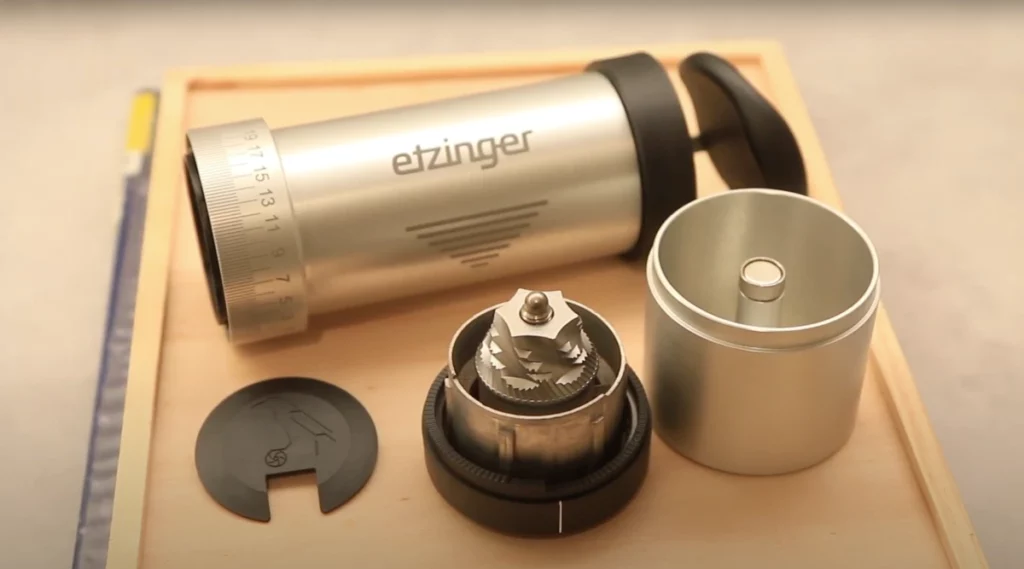
The burrs themselves are 32mm steel conical burrs, designed for durability and precision. When it comes to grind evenness, the Etz-I performs well. When grinding fine for espresso, the particle sizes are remarkably consistent. This is particularly noticeable when dealing with light roasts, which often reveal the shortcomings of a grinder; the Etz-I handles them with ease. Dark roasts, too, come out evenly ground, without the usual issues of over-extraction.
However, when grinding more coarsely for filter coffee and French press, the consistency is not as good as other premium hand grinders.
The Etz-I also has another major drawback. The grinder is prone to clogging issues, particularly when set to finer grind sizes like those used for espresso. This necessitates occasional disassembly and cleaning, adding an extra layer of maintenance that I found frustrating, especially given the premium price tag. Clogging isn’t an issue with budget options like the Kingrinder K6, so Etzinger should have no excuses.
Etzinger Etz-I Grind Settings
Here’s the recommended Etzinger Etz-I grind settings. I recommend to use these as a reference point for dialing in. If you’re using light roast coffee start with the finer end of the range.
- Turkish coffee: 1-3
- Espresso: 3-7
- Moka pot and Aeropress: 6-9
- Filter: 9-13
- French press: 15-17
- Cold brew: 17-21
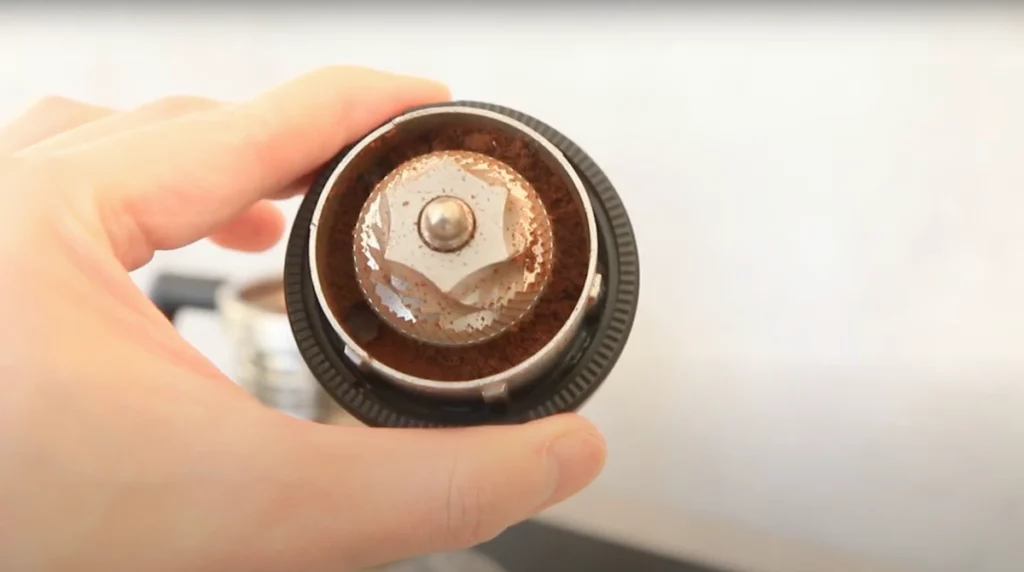
Etzinger Etz-I Taste Test
The Etz-I’s unique burr design and precise grind settings translate into a cup that’s nothing short of exceptional. The body of the coffee sits somewhere between the richness of a brew from a Comandante and the delicate nature of one from a Kinu. It’s a balanced body that doesn’t overpower the subtler notes but provides a satisfying mouthfeel.
As for complexity, the Etz-I seems to focus more on the acidity of the coffee, bringing out bright, vibrant notes that are often overshadowed in other grinders.
While it may not offer the sweetness of a Kinu or the rich depth of a Comandante, it finds its own niche by highlighting the acidity in a balanced way. This results in a cup that has a good amount of clarity, allowing individual flavors to shine without getting muddled, a refreshing change from the more muted profiles produced by other high-end grinders.
Is the Etzinger Etz-I Worth the Investment?
The Etz-I comes with a premium price tag that, in my opinion, isn’t fully justified given the user experience flaws. The counter-clockwise cranking mechanism is particularly uncomfortable for right-handed users, and the grinder has a tendency to clog at finer settings. These issues make it hard to recommend the Etz-I as a go-to grinder for everyone, especially considering the investment involved.
That said, if you’re left-handed, the Etz-I could be a solid choice. Despite its quirks, it delivers an exceptional cup of coffee, thanks to its innovative design and precise grind settings. If Etzinger addresses these user experience issues, the Etz-I could easily become one of my top rated hand grinders.
For now, it’s a conditional recommendation — excellent for left-handers or for right-handers who are willing to overlook a few flaws and a less enjoyable grinding experience for the sake of great coffee.

Coffee expert and industry insider, I’ve dedicated years to mastering the art and science of coffee making. From scrutinizing particle fineness to evaluating burr shapes, I delve into the minutiae that elevate coffee from good to exceptional. Whether it’s a complex pour-over or a robust espresso, my insights cater to those who don’t just drink coffee, but experience it.

